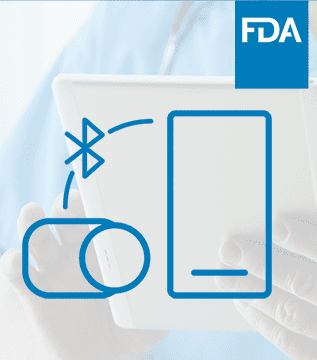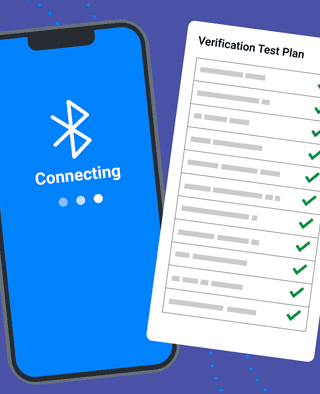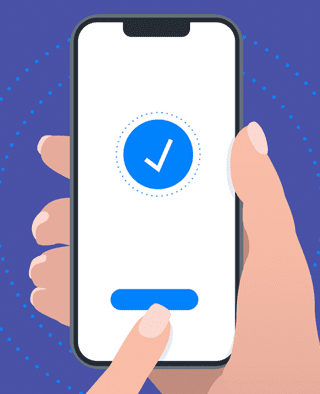
Article
Roundup: Bluetooth Medical Devices Cleared by FDA in 2024
This post was previously on the Pathfinder Software site. Pathfinder Software changed its name to Orthogonal in 2016. Read more.
Bluetooth Low Energy (BTLE), also known as Bluetooth Smart, is a wireless computer network technology that allows Bluetooth-enabled devices to “talk” to each other over a short distance. Compared to a standard Bluetooth connection, BTLE runs on far less power and has only about one-half of the range (15 meters or 50 feet), but offers most of the connectivity. This makes it ideal for medical devices that need to run on a limited power supply, typically in the form of a button cell, for months, or even years.
BTLE has been around for some time. Apple embraced the technology in the iPhone 4S in 2008. Samsung followed suit soon after with its Galaxy S3 and S4. In 2013, Google also joined the race to flood the market with BTLE enabled devices by incorporating it in its latest version of Android. This means that Bluetooth 4.0 BTLE low energy Android medical devices will soon become as common as smartphones.
Before the arrival of BTLE, the standard or classic Bluetooth provided the means for computing devices to communicate with each other. Manufacturers of PCs, smart phones, tablets and other devices took advantage of this by incorporating the technology in their products. Now, Bluetooth Smart is paving the way for an incredible array of devices that can talk to each other. According to ABI Research, an estimated 30 billion BTLE-enabled devices will enter the market by 2020.
So, what is the driving force behind the popularity of Bluetooth Smart? Obviously, power-efficiency is first and foremost. Bluetooth Smart requires so little power that devices can continue to operate for years without having to recharge or replace the power source (battery). This is because BTLE chip devices are very small. They are so small, in fact, that one Texas Instrument model measures only 6 x 6 millimeters. They are also able to run in several power states, such as ultra low peak, average and idle modes.
The second driving force is the ability of the devices to work on any smartphone or tablet. This makes it easy for OEMs and software developers to create solutions that they can distribute to the millions of users of Bluetooth-enabled products. The third is the data the technology can deliver using SMS technology, which has a payload of 160 characters per message. This allows any BTLE-enabled medical device to send data in real time for immediate diagnosis. The data can also be stored on a smartphone, tablet or computer to be sent over a local area network (LAN), mobile network or the internet at a later time.
The significance of this to the healthcare and fitness industry is that a quiet revolution is underway. Soon, the market will be flooded with an incredible array of Bluetooth 4.0 BTLE low energy Android medical devices and applications designed for every purpose. These devices and applications could range from the common stethoscope to sophisticated equipment used in hospitals. BTLE would be ideal for these devices, as most of them will need to transmit only small amounts of data over a short distance.
There are other reasons that make Bluetooth Smart ideal for healthcare and fitness, too. Low power devices like wireless body sensors reduce the risk of infection, clinical errors and the costs of patient monitoring. These devices allow people to monitor their health in the comfort of their own home, and to live an independent lifestyle. For example, BTLE-enabled wearable sensors called Remote Patient Monitoring (RPM) can collect information and send it directly to a doctor.
Some examples of BTLE-enabled medical and health products are the 3M Littmann® Electronic Stethoscope Model 3200, iHealth Gluco-Monitoring System, Onyx II wireless pulse oximeter from Nonin, and Withings Wireless Scale. These and other devices can automatically transmit the data to a smartphone, tablet or computer. Google’s commitment to the technology is certain to add many more Bluetooth 4.0 BTLE low-energy Android medical devices in the coming years. This will be a major boon to medical professionals as well as their patients.
Related Posts

Article
Roundup: Bluetooth Medical Devices Cleared by FDA in 2024

Article
Roundup: Bluetooth Medical Devices Cleared by FDA in 2023

Article
Testing Strategies for Bluetooth Medical Devices

Article
Patient Engagement & UX for Bluetooth Medical Devices